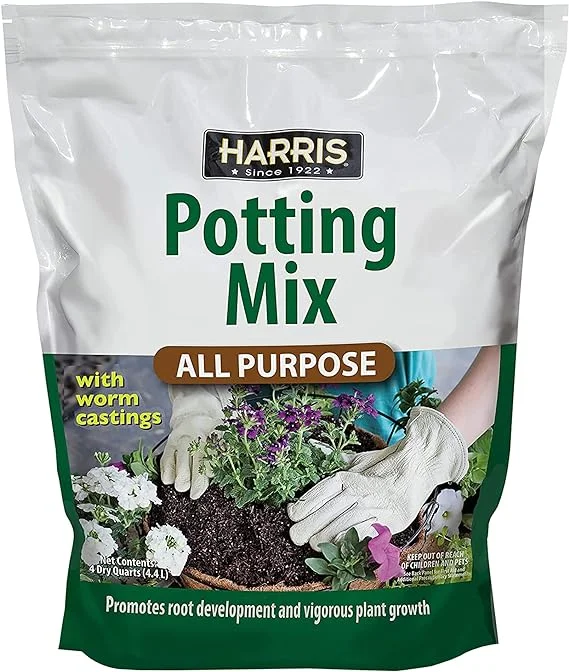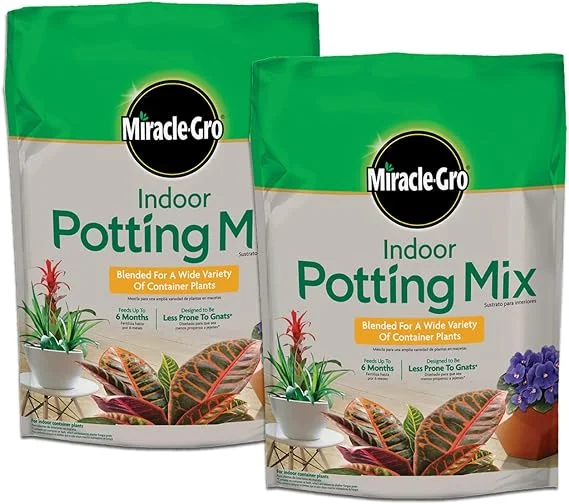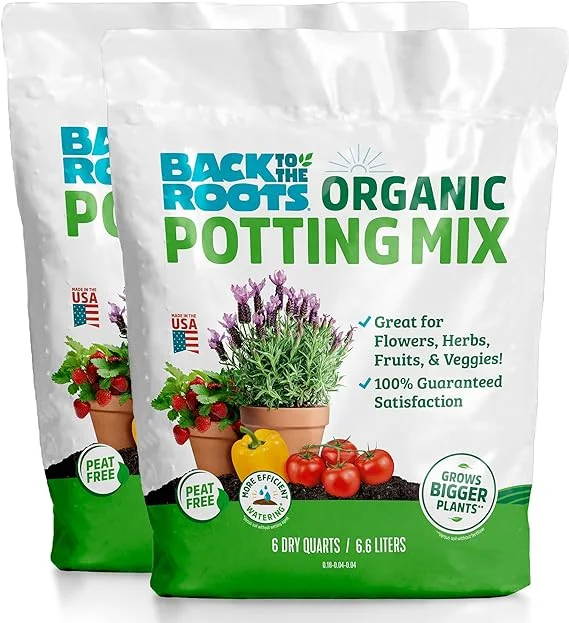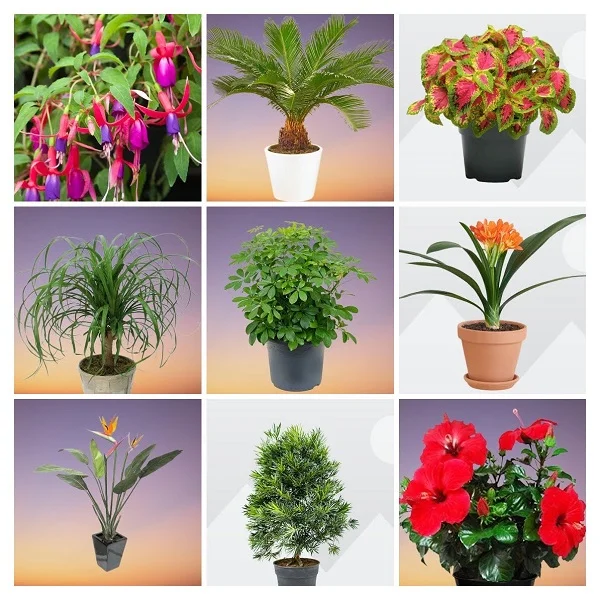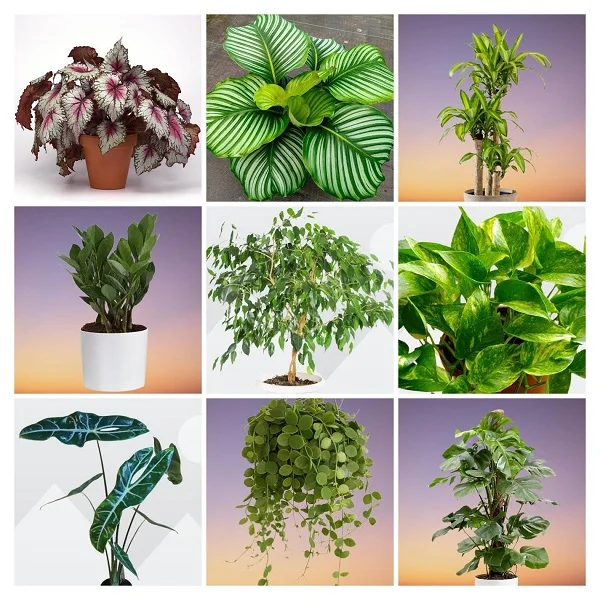Fishtail Palm (Caryota mitis) Indoor Care, Problems and Solutions
Some links in this post may be affiliate links
Fishtail Palm (Caryota mitis) thrives in bright indirect light, average warmth and humidity, and moderately moist, rich, well-drained soil coupled with monthly feeding in the growing season.
Caryota mitis also called Clustering Fishtail Palm is among the popular indoor palms on account of its spectacular, ragged-edged leaflets on arching fronds. It gets its name from the shape of the leaflets which look-like fish tails.
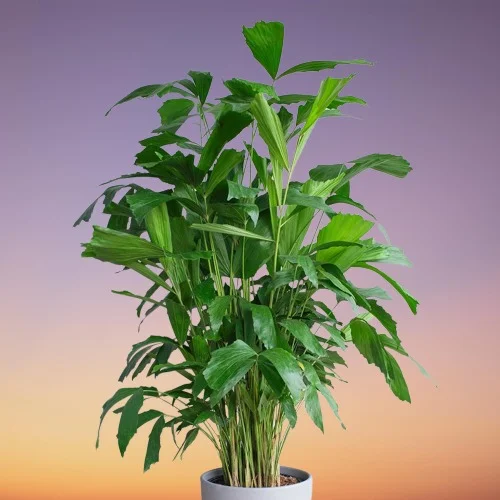
Botanical name: Caryota mitis
Family: Arecaceae
Common names: Fishtail Palm, Clustering Fishtail Palm
Origin
Caryota mitis is native to Tropical Asia from India to Java to Southern China and naturalized in southern Florida and in parts of Africa and Latin America.
How big do Fishtail Palms get?
Fishtail Palm produces clustered stems which in the wild can grow to a height of 33 feet and 6 inch in diameter. The leaflets are about 6 inches long and 4 inches wide while the leaves can be up to 10 feet long.
Indoors, the Clustering Fishtail Palm can grow to a height of 6 feet. Based on its large size, Fishtail Palm is among the best tree-like plants for sprucing up the home.
A related species is Caryota urens (Wine Fishtail Palm) whose leaflets are more triangular but fewer. Both palms form stems and mature at a height of 6-8 feet.
Flowers
Clustering Fishtail Palm bears purple flowers and the fruits are dark-purple to red when given the right growing conditions. However, it is unlikely to flower when grown indoors.
Is Fishtail Palm poisonous?
Yes. The fruits of Fishtail Palm are toxic to both humans and pets. They contain sharp, needle-like crystals of calcium oxalate. If ingested, they can cause burning in the mouth and throat, drooling and abdominal pains. They can also cause damage and itching on contact with the skin.
Where to buy
If you are looking to add Fishtail Palms to your collection, you may obtain them online from Etsy (Link to Etsy).
How to Care for Fishtail Palm Indoors
To care for Fishtail Palm indoors, provide bright indirect light (filtered light), warmth of 16-260C, humidity of 50-55% and moderately moist, fertile, well-drained potting soil coupled with monthly feeding during the growing season.
Caryota mitis care requires repotting every 3 years if pot-bound. Pruning is needed to keep the palm tidy as well as discourage pests and diseases. Keep reading for more on these growing conditions and how to achieve them.
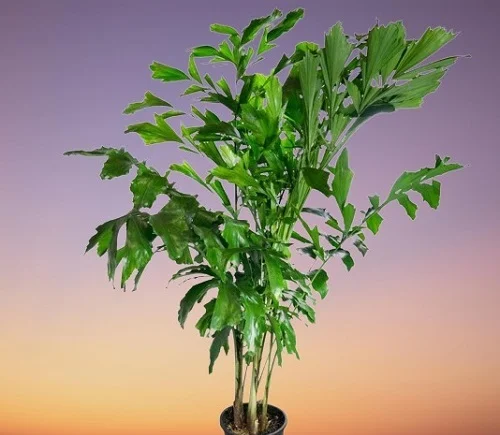
Light Requirements
Do Fishtail Palms like sun or shade?
Fishtail Palm grows best in bright indirect light (partial shade); close to an east- or west-facing window is perfect for this palm.
However, the palm has the ability to grow with moderate sun exposure for a short period. Too much light will cause the palm to develop a yellowish color, therefore, keep it away or shield it from too bright light.
Where the light is too low, you may full spectrum grow lights to supplement it to prevent slowed growth, yellowing and leaf drop.
To ensure uniform growth, rotate the pot regularly to ensure that the palm receives adequate light on all sides.
Watering
Water your Fishtail Palm liberally in spring and summer while allowing the top 2-3 inches of soil to dry out between waterings. Maintain the soil moderately moist and avoid overwatering as it can lead to rotting, yellowing, browning and leaf drop.
Decrease watering in fall and winter to keep the soil barely moist as growth is reduced at this time. Do not allow the soil to dry out completely to avoid stunted growth, wilting, browning and leaf fall.
Use water that is free of chlorine and other dissolved chemicals to prevent browning of leaf edges and tips. Ensure that the water is at room temperature to avoid cold shock which can result in stunted growth and leaf loss.
Avoid getting the base wet as it can lead to rotting and eventual loss of the palm. Do not allow the palm to sit in soggy soil to prevent root-rot which is characterized by rotting, yellowing, brwning and plant collapse.
Temperature & Humidity
Fishtail Palm requires a warmth of 16-260C to thrive. If the temperature is comfortable for you it is ideal for this palm.
Keep it away from sources of drafts like AC units, windy doors, hot air vents, stoves, hot surfaces among others as it cannot tolerate temperature flactuations which can result in reduced growth, yellowing, brown spots and browning of leaf tips andedges.
Caryota mitis has no need for high humidity; a humidity of 50-55% is adequate for this palm. However, if the temperatures are very high, leading to too dry air, the palm may develop brown leaf tips and edges. To increase humidity, set the pot on a wet pebble tray, use a cool mist humidifier or group the plants together.
Fertilizer
What is the best fertilizer for Fishtail Palm?
Feed your Fishtail Palm with a balanced, liquid fertilizer on monthly basis in spring and summer. Do not feed in fall and winter since the growth is reduced at this time. Take care not to overfeed the palm as it can cause yellowing of the fronds.
To prevent fertilizer build up which is indicated by leaf burn and brown spots, regularly flush the soil by running a stream of water through the soil until water comes out through the drainage hole. Allow the stream of water to run for some time and repeat the process several times.
Potting Soil
The best soil for Fishtail Palm should be rich in organic matter and well-drained to prevent it from getting soggy while providing the required nutrients. A blend of 2 parts all purpose potting mix and 1 part perlite (for drainage) is ideal for this palm.
Repotting
Repot Fishtail Palm every 3 years, only when it has overgrown its current pot; keep it crowded to prevent it from growing too fast. Select a pot 1-2 sizes larger that the current one.
Confirm that the pot has a drainage hole and the soil is loose and free-draining to prevent waterlogging which can lead to root-rot and death of the palm.
Apply a slow release fertilizer to the potting soil to promote faster establishment of the the palm. This fertilizer will be adequate for the next 3-4 months, therefore, do not add any more fertilizer in this period.
Take care not to damage the roots and do not try to seperate or spread out the roots. Water the palm thoroughly and gently press down the soil to get rid of air pockets.
Pruning & Maintenance
Pruning Fishtail Palm is easy. Cut away the old brown and dry fronds near the soil surface to maintain the palm neat and tidy as well as minimize pest and disease infestations.
Where the seeds are required for propagation, allow the fruits to mature and drop then cut away the spent flower stalk. If the seeds are not required, cut away the flower stalk immediately it begins to form to prevent the palm from wasting energy on developing the flowers and seeds.
Ensure to use a sharp, clean pair of pruning scissors or a clean knife to minimize transmission of diseases from one plant to another.
Occasionally clean the mature leaves by damp-wiping with a soft cloth to get rid of dust and discourage pest infestation. You may also wash the leaves with a strong stream of water.
Fishtail Palm Propagation
Fishtail Palm (Caryota mitis) is propagated during the growing season from seeds, from offshoots or by plant division.
Learn how to propagate Fishtail Palm (Caryota mitis propagation).
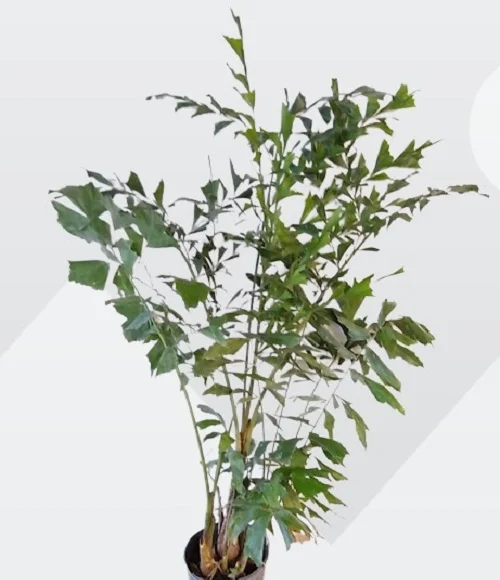
Fishtail Palm Problems & Remedies
Fishtail Palm (Caryota mitis) problems are yellow leaves, brown leaves, brown leaf tips, brown leaf spots, slow growth, pests and diseases among others. Keep reading for more on these problems and how to fix them.
Yellow leaves
Why are the leaves on my Fishtail Palm turning yellow?
Some of the causes of yellow leaves on your Fishtail Palm are inconsistent watering, soggy soil, too much fertilizer, low light, too much light, or temperature stress.
How to fix it
Inconsistent water: Do not water on a schedule. Water when the top 2-3 inches of soil feel dry to the touch. Never allow the soil to dry out completely.
Soggy soil: Use a pot with a drainage hole and well-draining soil to prevent waterlogging.
Too much fertilizer: The palm is not a heavy feeder, therefore, feed it monthly with a balanced, liquid fertilizer in spring and summer but do feed in fall and winter as growth is minimal at this time.
Low light: Position the palm in bright indirect light or use a grow light if the natural lighting is not enough.
Too much light: Keep the palm away from direct sunlight or use a light curtail to filter the sunshine.
Temperature stress: Keep the palm away from drafts emanating from windy doors, drafty windows, AC units, heat sources among others to prevent sudden changes in temperatures.
Brown leaves
The main causes of brown leaves on your Fishtail Palm are soggy soil, inconsistent watering, temperature stress, dry air, salts buildup or aging.
How to fix it
Carefully, remove the brown leaves by cutting and not pulling. Use a clean, sharp knife or pruning scissors to minimize injuries and contamination.
Soggy soil: Ensure that the soil is free-draining and the pot has a drainage hole.
Inconsistent watering: Water when the top 2-3 inches of soil dry out but do not allow the soil to dry out completely.
Temperature stress: Keep the palm away from sources of drafts to avoid temperature flactuations to maintain an average warmth.
Dry air: To elevate humidity, group the plants together, use a cool mist humidifier or set the pot on a wet pebble tray.
Salts buildup: Once every 2-3 months, leach out excess salts by running a stream of water through the soil until the water drains through the drainage hole.
Aging: This is a natural process. As the lower leaves mature, they turn brown and die.
Brown leaf tips
Brown leaf tips on Fishtail Palm may be caused by dry air, underwatering, drafts, or touching.
How to fix it
Trim off the brown leaf tips with a clean, sterilized pruning scissors to keep the plant neat and tidy.
Dry air: To raise humidity, set the pot on a wet pebble tray or group the plants together.
Underwatering: Do not allow the soil to dry out completely; water when the top 2-3 inches of soil feel dry.
Drafts: Shield or protect the palm from drafts like windy doors and windows, AC units and others to maintain a warmth of 16-260C.
Touching: Position the palm away from the line of traffic.
Brown leaf spots
Brown leaf spots on Fishtail Palm are due to overwatering, soggy soil or cold drafts.
How to fix it
Remove the affected leaves and discard them as they will not recover.
Inconsistent water: Water the top 2-3 inches of soil dry out. Do not follow a watering schedule.
Soggy soil: Confirm that the pot has a drainage hole and the soil is free-draining to prevent waterlogging.
Cold drafts: Keep the palm away from cold drafts to maintain an average warmth of 16-260C.
Slow growth
Slow growth on Fishtail Palm is caused by low light, nutrients deficiency, inconsistent watering, extreme temperatures or low humidity.
How to fix it
Low light: Position the palm in a brighter spot where it will receive bright indirect light or instal grow lights if the natural lighting is not adequate.
Nutrients deficiency: Feed the palm monthly with a balanced, water-soluble fertilizer in spring and summer.
Inconsistent water: Do not water on a schedule; water when the top 2-3 inches of soil are dry.
Extreme temperatures: Keep the palm away from drafts to prevent sudden changes in temperatures.
Low humidity: Set the pot a wet pebble tray, use a cool mist humidifier or group the plants together.
Leaves totally discolored or spotted
Magnesium, Manganese and Iron deficiency are the cause of totally discolored and spotted leaves on Fishtail Palm.
How to fix it
Feed the palm regularly with a good fertilizer which contains micro-nutrients. Provide ocassional pinches of Magnesium and chelated Iron.
Pests
Common pests on Fishtail Palm are spider mites, scales and mealybugs especially where the air is too dry.
How to fix it
- Isolate the affected plant to prevent spread to the rest of the plants.
- Treat the infested plant with neem oil or insecticidal soap as per the manufacturers' recommendations.
- Regularly check underneath and between the leaves for these pests and carry out timely control measures.
- Maintain the plant well pruned and raise humidity to discourage pest infestation.
Diseases
Fishtail Palm is to prone to the following two diseases.
1. Pseudomonas which is indicated by brown and wet lesions that run parallel to the leaf vein.
How to fix it
Isolate the affected palm to prevent spread to other plants or discard the plant as no cure is effective.
2. Leaf spot disease which is prevalent in stuffy, humid conditions. The disease is characterized by brown patches surrounded by a yellow halo (soft leaf spots).
How to fix it
- Remove and burn the affected parts to minimize the risk of spread to the rest of the plants.
- Spray the affected plant with a systemic fungicide; ensure to follow the manufacturers instructions.
- Maintain the plant on the dry side for some time and ensure good air flow.
- Use a pot with a drainage hole and well-draining soil.
You liked it? Share on social media.
Related Content
Amazon Associates Disclosure
Homeplantsguide.com is a participant in the Amazon Services LLC Associates Program, an affiliate advertising program designed to provide a means for sites to earn advertising fees by advertising and linking to amazon.com.
